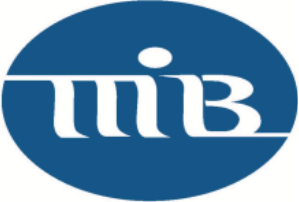By Bill Showalter, Senior Consultant, Young & Associates, Inc.
TILA. Q: Our flood vendor no longer separates the life of the loan portion of the fee. Should the entire fee now be considered a prepaid finance charge?
A: Yes, though it will have a minimal (if any) impact on the annual percentage rate (APR) and finance charge disclosures (well within tolerances). The Official Staff Commentary on Regulation Z states, “If a creditor is uncertain about what portion of a fee to be paid at consummation or loan closing is related to the initial decision to grant credit, the entire fee may be treated as a finance charge.”
BSA. Q: If a legal entity has multiple accounts (or multiple loans), does the beneficial ownership information need re-certified for each new account even if the beneficial ownership information remains unchanged and was previously verified? From what I understand from the Beneficial Owner FAQ (#10), the bank is able to receive verbal or written consent that the beneficial owner information remains unchanged. Is my understanding of this correct? We would probably need to retain that written/verbal consent on file, presumably.
A: Your reading is correct. Once the bank has confirmed the information (memorialized on the proper form), then it can continue to rely on that confirmation and its information — as long as you specifically ask the customer whenever any subsequent account/loan is opened if it is still correct and up to date and clearly documents this inquiry with its customer response.
Of course, if they say, “No, there’s been some change” or something similar, then you pull out a new form for them to fill in before proceeding any further.
HMDA. Q: We have always said that we do not have a preapproval or a prequalification program. HMDA has been reported as NA or borrower did not request preapproval to this question since before I joined the mortgage department. If a consumer wishes to see what they qualify for, they have to apply. And a comprehensive review of creditworthiness is determined via application, a full review of income, deposits and credit history.
Many times they even have an address, which is one of six criteria to be considered an “application” under HMDA. So, we call that an application. We disclose all the proper up-front disclosures each time and report to HMDA that application. We give a letter of approval subject to clear title, appraisal, verification of missing pieces, and sometimes require PMI review.
Now, as I read the definition of a “preapproval program” in Regulation C, it appears that this is so close to what we call an application that it makes me wonder if we are still OK to say we do not have a preapproval program.
A: From your description, it sounds like the bank does have a “preapproval program” under HMDA. The basic purpose of that reporting field is to explain longer time frames for fair lending exams. The best course would be to incorporate the preapproval program in bank policy and begin reporting it correctly.
Of course, when the applicants start, they already have a property in mind when they approach the bank, it is an “application” rather than a request for preapproval.
TILA. Q: We need to correct the purpose of the loan disclosed on a Closing Disclosure (CD) from “refinance” to “home equity.” Does this call for a corrected CD and a new waiting period?
I know Regulation Z provides that, if the product changes (which it did not in this case), a new CD and waiting period are required. But I did not know if this situation falls under that rule as well.
A: Yes, a new CD is required. However, a new waiting period is not to correct this clerical error.
Privacy. Q: I have a beginner’s question I think you may be able to help me with.
In an effort to make sure all information available on our website is current and accurate, I found our Privacy Notice. It seems compliant with Regulation P and our privacy policy, and it is based on the model form provided in the regulation.
We noticed that the revision date at the top, December 2010, is more than a decade old and could cause a customer to question if the notice is current and reliable. I think that is a fair sentiment, however, the notice is current despite its age. Would removing the revision date from the notice trigger a new one to be mailed? I do not think that would constitute a privacy policy change to require a new mailing, nor do I think the revision date is required on the notice from my reading of Regulation P.
In practice, I do think it is a good idea to keep track of the revisions, but not necessarily on the document in this particular situation. Am I correct in my understanding?
A: I can understand that concern, but there is no requirement that the notice be updated on any particular frequency. It is updated when the bank’s privacy policy/practices change, whenever that is. So, having the same notice for 11 or so years is not a problem under Reg P.
As far as having the revision date on the notice, I will point you to the General Instructions in the Appendix to Reg P. While the body of the regulation is silent about a revision date, the General Instructions in the Appendix does require it.
Insider Credit. Q: When calculating Regulation O loans to insiders, how do we treat related interests? We have a senior executive director of an LLC and owns 10.6% of the LLC. I am pretty sure he sets the policies and practices there. He does not guarantee the loan. Do we count 10.6% of the LLC loan or 100% of the LLC loan in his total Regulation O loans?
A: You are correct. From your description, your director has “control” of the LLC since he “Has the power to exercise a controlling influence over the management or policies of the company or bank.” Therefore, extensions of credit to that related interest feed into your computations of insider lending limits — and you count the entire loan amount (100%), no prorating based on any ownership percentage in that related interest. Percentage of ownership comes into play in one of the tests of “control,” as well as in determining whether someone is a “principal shareholder.” Otherwise, it is not an issue.
EFTA. Q: After going through a webinar on Regulation E errors and disputes, we have concluded that third-party payment applications (e.g., PayPal, Apple Pay, Cash, Venmo) do not fall under the Regulation E rules.
During the webinar, it was noted that the financial institution might not be liable for unauthorized electronic funds transfers (EFT) initiated through third-party payment applications. The financial institution will not be liable if a third party holds the “account,” it does not provide an access device (such as login credentials or debit card that the consumer can use to access the consumer’s account held by the third party), and it does not have an agreement with the consumer regarding the access device.
With that being said, I would like to confirm that we are not obligated to give the customer credit for those types of “fraud” disputes, even under the $50.
A: First, unless the customer is funding the particular transfer with a check, money order, cash, Bitcoin-type “currency,” or some other non-EFT method, then the method used to get their funds from their account at the bank does qualify as an “electronic fund transfer” (“any transfer of funds initiated through an electronic terminal …”)
If the bank does not have an agreement with the third-party payor, it still has some EFT error investigation obligation, but that is limited to its own records (whatever it has within its four walls — actual & virtual — so to speak).
The bank is not totally off the hook regarding investigation, but its role is rather limited when it has no agreement with that third party regarding EFTs to/from its customer’s “account” (that is accessed somehow to fund transfers through that third party).
CRA. Q: If a bank originates a loan in an area that gives them CRA credit and later sells the loan (servicing released), do they still get CRA credit for that loan?
What if the loan originates in the bank’s name — do they get the CRA credit? On the other hand, what if the loan originates in the other bank’s (the one they are selling the loan to) name? Does the originating bank get the CRA credit?
A: Generally, to get “credit” for a loan, it must be originated in the bank’s name. Whether it is sold later is not an issue — that allows the bank to lend more as it gets its funds back.
The bank could keep records related to loans it originates in another bank’s name and share this information with examiners as additional information. Since the bank is acting as the other bank’s agent in such cases, rather than as the lender/creditor, it does not get full “credit” — after all, this is a loan of the other bank.
Bill Showalter, Senior Consultant, Young & Associates, Inc., provides banks and thrifts with support for their compliance programs, independent reviews, and in-bank training and a full menu of management consulting, loan review, IT consulting, and policy systems.










